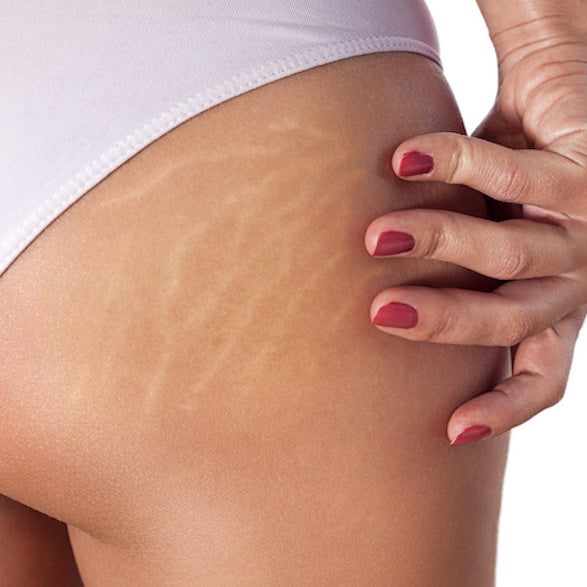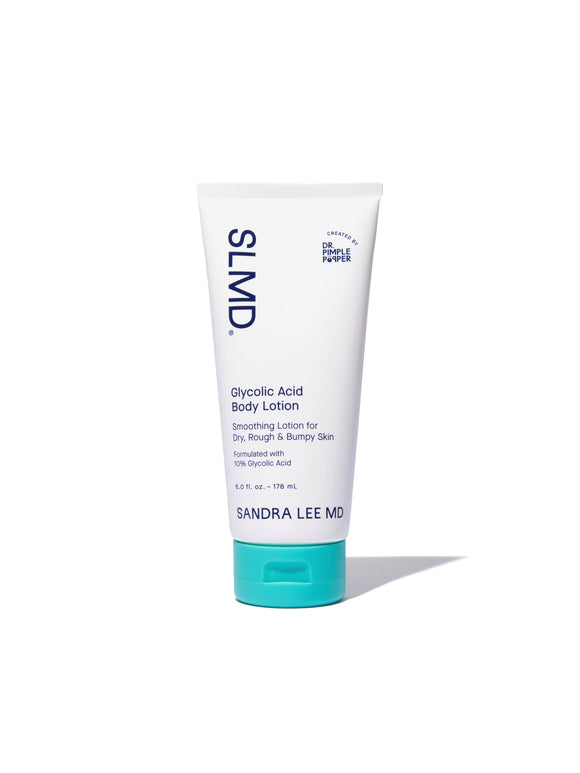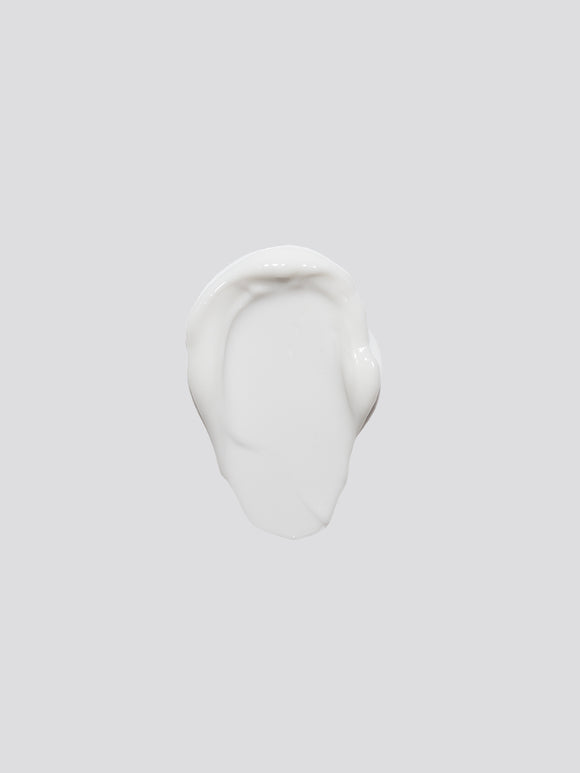
Can You Get Rid of Stretch Marks?
Dermatologist Sandra Lee, MD helps us break down what causes stretch marks — and what you can do about them.
Published:
2 minute read
Stretch marks are incredibly common, but most people are in the dark about what causes them. There's a lot of information circulating about options for treating them — from miracle creams to trendy gadgets. But do any of these remedies really work?
Here, we're breaking down what causes stretch marks, and whether or not you can actually get rid of them.
Article Quick Links
What do stretch marks look like?
Stretch marks (aka striae distensae) are indented lines that can appear on areas like your stomach, breasts, hips, butt, and thighs. There are two types, differentiated by time:
- Striae rubrae (newer): pink, red, or purple lesions that are perpendicular to skin tension, may be temporary
- Striae albae (older): faded white or grayish blue marks that may be flattened or wrinkled, may be permanent
The good news is that stretch marks are typically not painful and they’re absolutely harmless.
What causes stretch marks?
Stretch marks form when your skin suddenly stretches. More specifically, when your body grows, the fibers in your skin stretch to accommodate that growth. Your skin actually tears when this happens, so deeper layers of your skin become visible, creating a discolored line.
Certain factors affect whether or not you're at risk of developing stretch marks, including:
- Gender: women are more likely to get stretch marks than men
- Genetics: they tend to run in families
- Stress: cortisol (produced in your adrenal glands in response to stress) is converted into cortisone, which weakens skin elasticity and can make it easier for stretch marks to happen
In addition, there are several life stages that can make stretch marks more likely:
- Pregnancy: skin stretches relatively rapidly to accommodate the growing baby
- Growth spurts: teens are susceptible as they grow quickly in a short time period
- Weight gain: skin has to stretch as excess fat accumulates
- Steroid creams: if used longer than directed, these creams can deplete the skin's collagen

How do you get rid of stretch marks?
Currently, there's no cure for stretch marks. That being said, there are steps you can take that may fade their appearance. Over-the-counter treatments can sometimes help, but in-office treatments at your dermatologist’s office are typically more effective.
Here are some options to try:
- Retinoids: some evidence indicates vitamin A derivatives may improve the appearance of striae rubrae. Try OTC retinol (like SLMD Retinol Resurfacing Serum), and ask your dermatologist about a prescription cream if you don't see results. Avoid retinoids while pregnant or breastfeeding.
- Glycolic acid: this AHA is known to stimulate collagen, and there is anecdotal evidence that chemical peels can help improve the appearance of stretch marks. If you want to start with an over-the-counter option, try SLMD Glycolic Acid Body Scrub and Body Lotion, as well as AHA/BHA Swipes.
- Laser treatments: pulsed dye laser therapy, which stimulates collagen and elastin growth, works best on newer stretch marks. Fractional photothermolysis is another in-office laser treatment that can stimulate wound healing.
- Microdermabrasion: polishing the top layer of skin with crystals to reveal newer skin underneath may help reduce the appearance of stretch marks, including older striae albae.

Can you prevent stretch marks?
There’s not much scientific evidence that you can prevent stretch marks from forming, but in theory, keeping skin healthy and moisturized might help. SLMD Body Smoothing System contains glycolic acid, which has been shown to stimulate collagen production. Certainly avoiding any weight gain that could stretch skin is helpful, as well.

Dr. Lee's Last Word
Stretch marks are extremely common, and patients are always asking me about how to get rid of them. Unfortunately there is no way to "cure" stretch marks — sometimes they fade away on their own, and sometimes they don't. But there are some treatments, like retinoids and lasers, that we can try to help minimize their appearance if they bother you.









